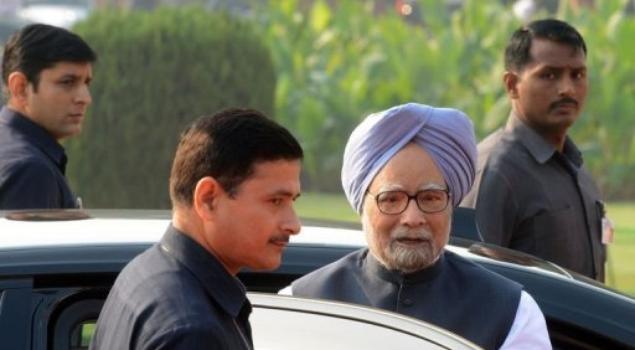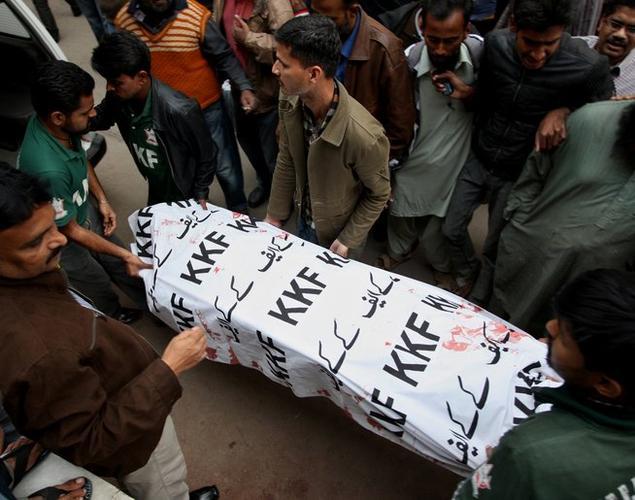October 19, 2017
It has become the ultimate symbol of American resolve against the threat of North Korea: a visit by the U.S. commander in chief to “freedom’s frontier,” the heavily guarded demilitarized zone that has separated the North and South for 64 years.

October 19, 2017
It has become the ultimate symbol of American resolve against the threat of North Korea: a visit by the U.S. commander in chief to “freedom’s frontier,” the heavily guarded demilitarized zone that has separated the North and South for 64 years.

United States Vice President Pence arrives at the border village of Panmunjom in the Demilitarized Zone in April. – Lee Jin-man/Associated Press
Wearing bomber-style jackets, surrounded by military officers, peering through binoculars, all but one president since Ronald Reagan has gazed across the barren strip of land at the 38th parallel from an observation post — and been moved to talk tough. In April, Vice President Pence, undertaking the same solemn ritual, said he toured the DMZ so the North Koreans could “see our resolve in my face.”
But as President Trump prepares for a 12-day swing next month through five Asian nations to bolster international pressure on Pyongyang, the administration is divided over whether he should make the pilgrimage, an issue that remains unresolved. Some aides worry a visit could further inflame already heightened tensions on the Korean Peninsula, while others have expressed concern over Trump’s personal safety, according to people who have spoken to administration officials.
Asian foreign policy veterans of both the Obama and George W. Bush administrations said it would be foolish for Trump not to go. But the White House is facing opposition from South Korean President Moon Jae-in’s administration and the U.S. State Department over fears that a visit would ratchet up Trump’s war of words with North Korean dictator Kim Jong Un.
A White House spokesman declined to comment, saying the administration was not ready to release the full itinerary for Trump’s trip, which is scheduled to last from Nov. 3 to Nov. 14.
Asked during a news conference this week whether a DMZ visit would provoke Pyongyang, Trump said the trip’s details were not finalized and added: “I didn’t hear in terms of provoking, but we will certainly take a look at that.”
Trump has already done plenty of provoking amid reports that North Korea’s ballistic missile and nuclear weapons programs are making more rapid advances than expected. Trump has repeatedly mocked Kim as “Little Rocket Man,” and he declared during a United Nations speech last month that the United States is prepared to “totally destroy” the North if necessary.
Kim has responded with his own harsh rhetoric, he called Trump a “mentally deranged U.S. dotard,” and by threatening to strike Guam and test a nuclear device over the Pacific Ocean.
Trump will have plenty of other chances to talk tough, starting with a tour of the Pearl Harbor military base in Hawaii on his way to Asia. In Tokyo, the president is scheduled to meet with the parents of a Japanese girl kidnapped by North Korean agents four decades ago, and in Seoul, he will deliver a speech to the South Korean national assembly.

President Obama at Observation Post Ouellette in the Demilitarized Zone in 2012. – Pablo Martinez Monsivais/Associated Press
But current and former U.S. officials said a presidential visit to the DMZ sends a more pointed message to the American and South Korean troops who patrol the border region just 30 miles north of Seoul — as well as the enemies forces on the other side — that the United States remains committed to the bilateral defense treaty that has been in place since the armistice that halted fighting in the Korean War in 1953.
“The DMZ functions as a kind of amplifier,” said Daniel Russel, who served as assistant secretary of state of East Asian and Pacific affairs under President Obama and is now a senior fellow at the Asia Society. “The message takes on a more martial and ominous tone when it comes out of a military command post on North Korea’s doorstep.”
George H.W. Bush is the only president since Reagan toured the DMZ in 1983 not to visit, although Bush did make his own trip while serving as Reagan’s vice president.
Obama visited the DMZ during a 2012 trip to Seoul for a nuclear summit, telling the troops that “the contrast between South Korea and North Korea could not be clearer, could not be starker, both in terms of freedom but also in terms of prosperity.”
In 1993, president Bill Clinton told reporters during a DMZ tour that if the North Korea ever used nuclear weapons “it would be the end of their country.” Clinton walked so far across the Bridge of No Return that joins the two Koreas that U.S. Secret Service agents reportedly brought rifles into the area to protect him, in violation of the Korean War cease-fire.
Officials in Seoul and Tokyo are eager for Trump to reaffirm his commitment to the U.S. defense treaties with its East Asian allies. The president has unsettled Moon and Japanese Prime Minister Shinzo Abe by criticizing U.S. trade imbalances with those nations, pulling out of a 12-nation Asia Pacific trade accord and demanding a renegotiation of a bilateral trade pact with South Korea that Obama signed in 2011.

President Clinton takes the lens caps off a pair of army binoculars after looking through them and not getting a very good view from the Oulette guard post in the demilitarized zone. – Greg Gibson/Associated
At the same time, Moon’s advisers fear that a Trump visit to the DMZ could increase the chances of a miscalculation that could provoke a military confrontation or have other unintended consequences, such as harming Asian financial markets or disrupting planning for the Winter Olympics, which will be held in PyeongChang in February.
Evan Medeiros, who served as senior Asia director at the National Security Council under Obama, said Trump “needs to be crystal clear” over the United States position on North Korea and suggested that the costs of not visiting the DMZ could be greater than going.
“If he doesn’t go, guess what the next story is?” said Medeiros, who accompanied Vice President Biden to the DMZ in 2013.
Already some foreign policy experts are mocking the White House’s hesitation. On Tuesday, Jeffrey Lewis, a nuclear nonproliferation expert who operates a popular Twitter account, included a chicken emoji with his retweet of a South Korean news report that U.S. and South Korean officials were steering Trump away from the DMZ.
Former U.S. officials emphasized that Trump’s national security team could craft a visit that achieves the symbolic message — speaking to the troops, touring Observation Post Ouellette — without directly provoking the North with hostile words.
But they acknowledged that the president, who would be accompanied by reporters, is prone to straying off message.
“We’ve never had a president go to the DMZ who has implied the U.S. is preparing for preventative war with North Korea,” said Michael Green, who served as senior Asia director at the NSC under president George W. Bush.
In Feb. 2002, Bush visited the DMZ less than a month after he had called North Korea, Iran and Iraq the “axis of evil” during his State of the Union address. The president’s speechwriters proposed having Bush deliver remarks akin to Reagan’s seminal “tear down this wall” speech in West Berlin in 1987.

George W. Bush gazes out at North Korea from Observation Point Ouellette in the demilitarized zone in 2002. – J. Scott Applewhite/Associated Press
But Green said Bush’s team eventually came to conclude that such a moment could be misinterpreted as a provocative call for regime change in Pyongyang. Instead, they sent him to the Dorasan Train Station near the border to call on the North to open an uncompleted railway between the two countries.
“Like the United States, South Korea has become a beacon of freedom, showing to the world the power of human liberty to bring down walls and uplift lives,” said Bush, who also visited the DMZ observation post. “Today, across the mines and barbed wire, that light shines brighter than ever. It shines not as a threat to the North but as an invitation.”
Courtesy/Source: Washington Post







































































































